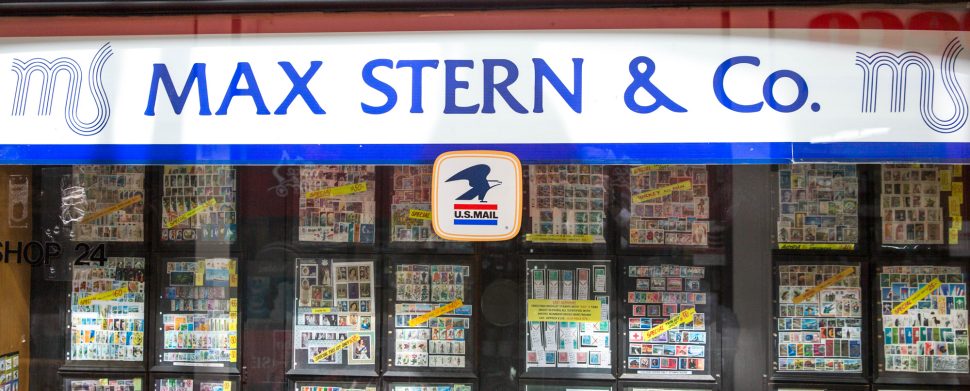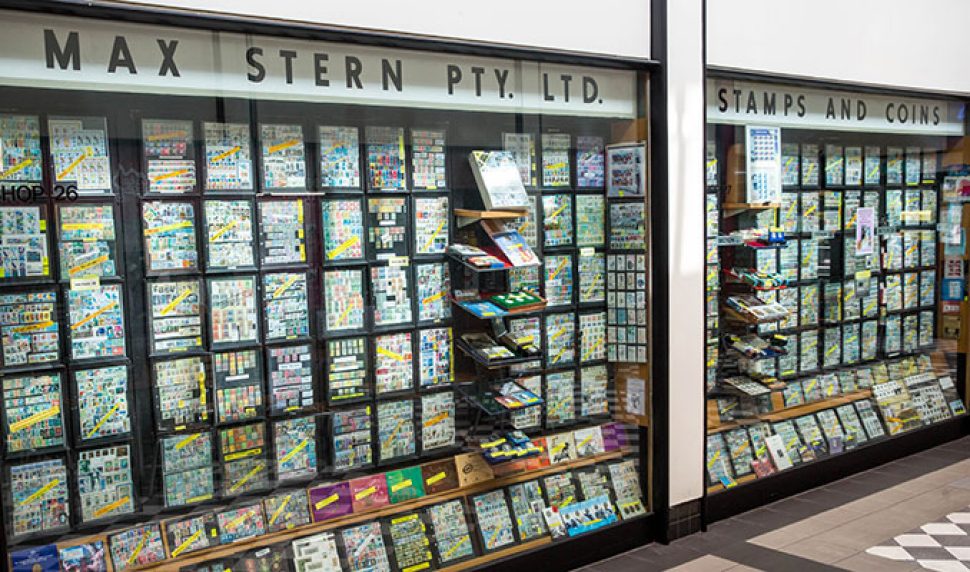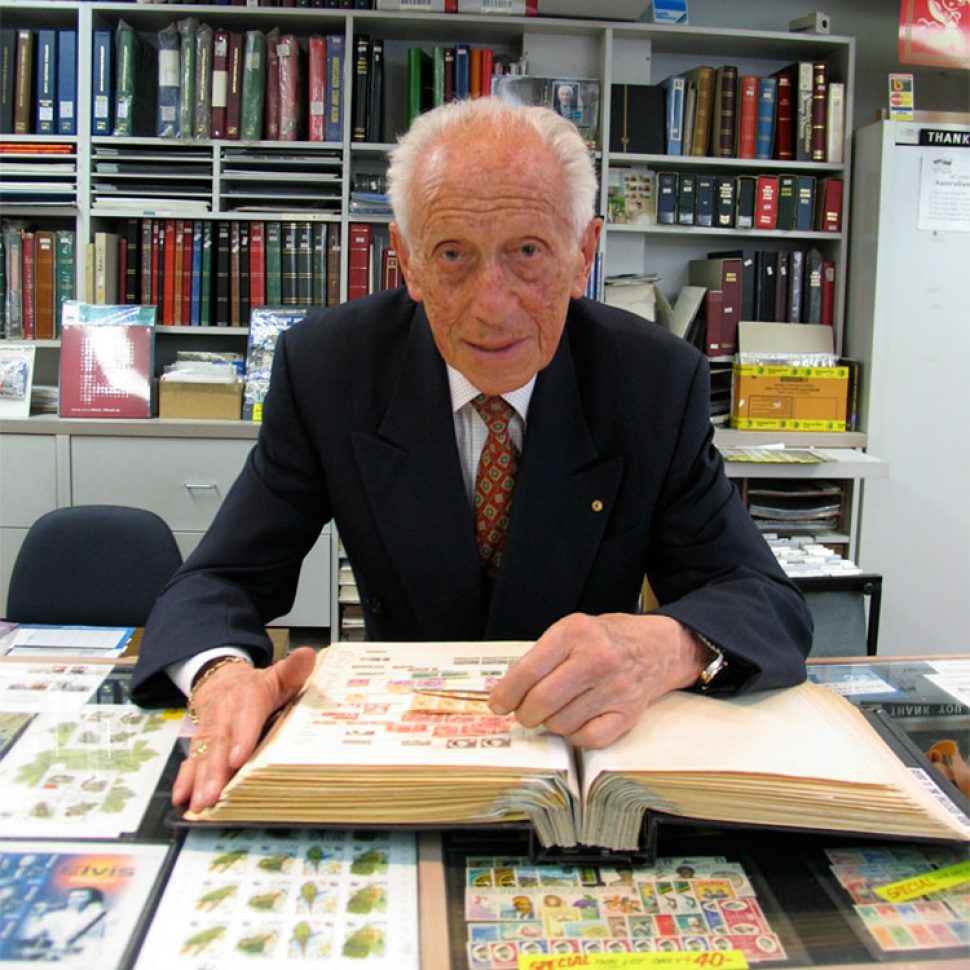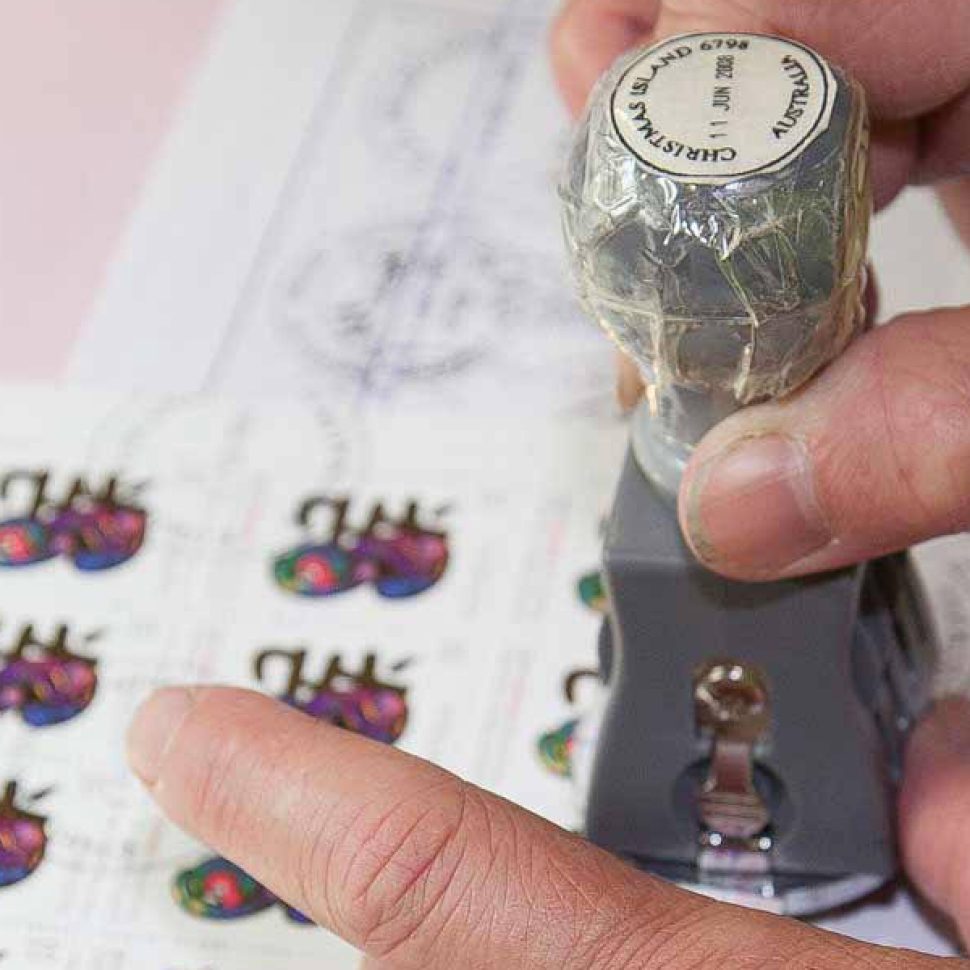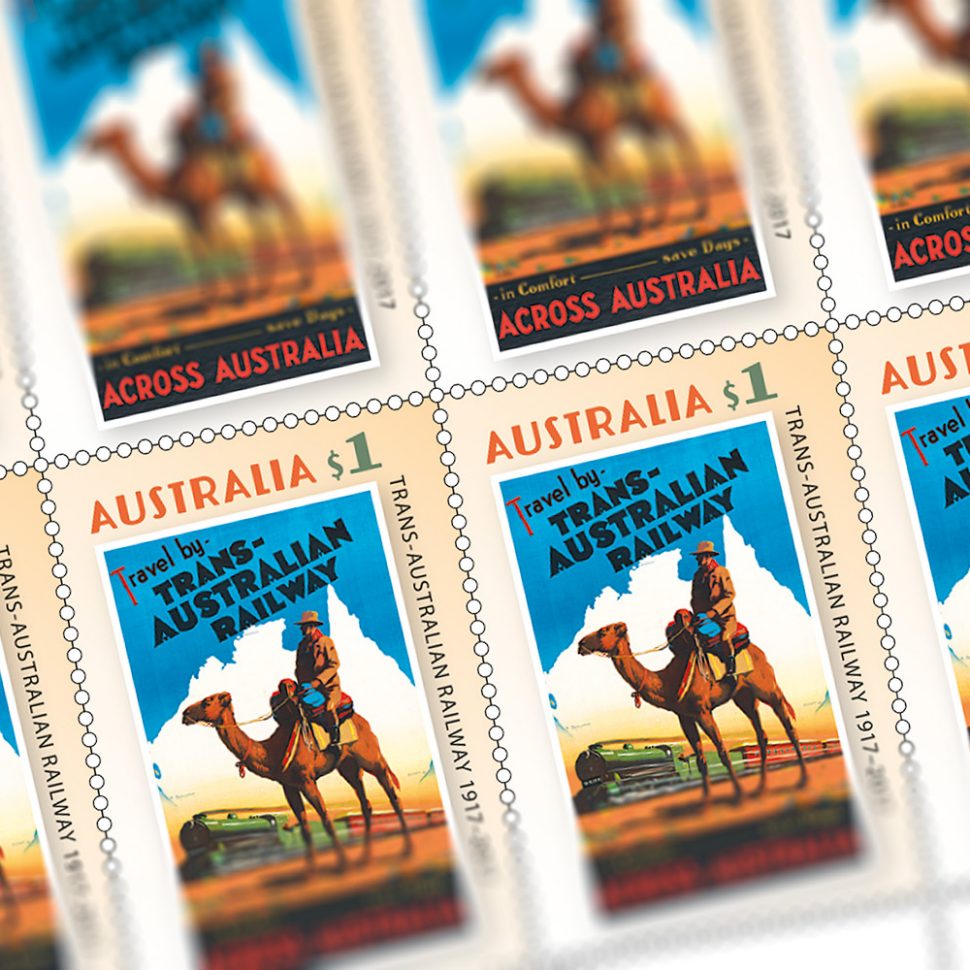There are few names in the Australian, and indeed worldwide, philatelic business better known than Max Stern. A Czechoslovakian-born Holocaust survivor, Max has been a pre-eminent stamp trader for 75 years. Now 94, he has gained a reputation as a world authority on stamps.
The name Max Stern has been synonymous in Australia with stamp issues of the world, coins ancient and modern, banknotes, fair prices and ethical trading since 1948. Well known amongst philatelic experts, traders and collectors, Max has done a great deal over the years to promote the hobby of philately.
Max was born in 1921 to an Orthodox Jewish family in Bratislava, Czechoslovakia. He was educated at a Jewish school and at the age of twelve he developed an interest in stamp collecting, a hobby that was to shape his life from that point on.
When asked what sparked Max’s interest in stamps and stamp collecting he said: “My father bought me an illustrated stamp album at the age of 13, and amongst the pages were pictures of various stamps. My fascination started with the triangle stamps of Cape of Good Hope, I had never seen anything like it before.”
He soon became a successful stamp trader and by the age of 16 was already earning enough to pay for his education. In 1936, Max began studying engineering at a college in Vienna. On his frequent trips home he turned a tidy profit selling stamps he had bought in Vienna.
When he began stamp trading in Bratislava aged 17, he was the main provider for his family. Through his attendance at stamp markets, Max was able to establish connections with stamp dealers all over Europe and established himself as a prominent professional philatelist. Remarkably, Max continued to operate his business throughout most of World War II.
After escaping the final deportation of Slovakia’s Jews in October 1944, Max went into hiding in his home town of Bratislava, holed up with several others in the crawl space between the ceiling and the roof of a local picture theatre. One night a 500 kilogram bomb crashed through the roof and close to the space where they hid. Incredibly it didn’t go off.
Eventually they were discovered, but narrowly managed to escape the Gestapo raid on their hideout. They found temporary refuge in a nightclub before being captured by the Gestapo. Max was taken to the Sachsenhausen Concentration Camp.
He was transferred to Lichtenrade, a satellite of Sachsenhausen, and put to work clearing rubble and building barricades, all on starvation rations. As the Russian army approached, the camps were evacuated and the prisoners sent out on a ‘death march.’ Anyone who could not keep up was shot on the spot.
One morning the prisoners woke up to find the German soldiers had fled. Max made the difficult journey home to Bratislava. It proved to be a painful homecoming. As Max explained, “My mother, father and two youngest brothers and wider family, with the exception of two sisters, had been murdered by the Nazis.”
Max’s resilience and need to survive gave him the strength to successfully re-join the stamp trade, re-establishing a stamp business in Bratislava in 1945. However the Communist takeover of Czechoslovakia three years later made it impossible for him to continue.
Through all of this adversity Max never lost his passion for stamps and his dedication to the industry. Talking about why he never gave up on philately he said: “During the Second World War, I was forced into stamp trading as I had no other options to earn a living, and had to support my parents. So stamp trading became a passion and a way of life for me right from the beginning.”
“I was lucky to survive WW2 because of my connections amongst the stamp fraternity and stamp traders worldwide. I had no other options, I was fascinated by stamps and as I started trading and earning a living, that made me more passionate about the industry.”
Escaping from the communist regime in Czechoslovakia in 1948, Max, together with his wife Eva, made their way to Australia. Soon after his arrival in Australia Max joined ASDA (Australian Stamp Dealers’ Association) and in 1950 became Secretary. He has since been both President and Secretary on more than one occasion and is now an honorary life member.
In 1950 he had set up as a stamp trader in Melbourne, and two years later he opened a shop in the former Empire Arcade.
In 1956, he moved to his present location in Port Phillip Arcade, off Flinders Street where he has expanded from one to nine shopfronts, representing 21 postal administrations, supplying the trade and retail customers with stamps and coins from around the world.
When asked about his own philatelic interests and what has captured his attention to add to his own private collection he said: “I have always had a passion for classics, I use to study early issues and an interest into post marks from several European countries, Austria and Germany gave me insights of the postal services which were going back to the Holy Roman Empire.”
During the mid–1960s, Max organised the most significant venture of his career. This was the Ampol Petroleum promotion, in which 70 million stamps were given away to petrol station customers, in an attempt to increase petrol sales.
Describing how the promotion occurred he said: “An advertising agent representing Ampol came into my shop in the Port Philip Arcade and said I was recommended to him to assist in the promotion from his contacts in the Sydney trade. He said he needed to try to obtain large quantities of stamps that will be packaged into three or four stamps per package.”
“I went overseas to the Brussels World Fair where I made contact with the Russian and Hungarian postal administrations from where we later obtained the bulk of our stamps for the giveaway scheme. It was so successful that after two weeks the Ampol advertising company called me and said they needed to double the quantities! It was one of the most successful promotions ever undertaken in Australia.”
Another highlight and success story which deserves mention is AUSIPEX 1984, Australia’s first world stamp exhibition. Max served as vice-president under Ray Chapman. AUSIPEX 1984 proved to be the best stamp exhibition ever held in Australia.
What’s more Max has met some interesting characters during his Australian philatelic journey. “I have had several interesting encounters during my life,” he said. “One of the most interesting one was meeting Russian Astronaut Viktor Gorbatko, who is a stamp collector, in Tokyo. The other was Mr Liu Dianjie, President of the China National Philatelic Corporation who I established contact with after the opening up of China.
Since 1952 Max’s stamp business has grown from strength to strength. His company is one of the world’s best known stamp dealers and his long career, nurturing several generations of collectors, was recognised by his appointment as a Member in the General Division of the Order of Australia (AM) in 1999 for services to philately.
Max Stern has clients of 50 years’ standing. Some fly in from interstate for his expertise as a buyer and valuer. His secret, and the reason why his Melbourne shop has won shop of the year six times in a row during 2003 – 2008 by the Australasian Philatelic Traders Association is down to good old fashioned customer service he says.
“Our service is fast, uncomplicated, efficient and friendly. We still supply issues to the bulk of Australian Trade and Collectors. Many people like to talk to me about subjects they are specifically interested in, and we are well known for the service we provide to collectors in spite of the fact that some of these transactions might no longer be profitable.”
And what for the future of philately?
“I hope that future generations will come to appreciate the enormous advances of philately in Australia, which have been made over many decades. After all philately is still the world’s most popular hobby.”
“I have always maintained that philately as a hobby is here to stay forever, there will always be stamp collectors, maybe the age of the collectors will change from the junior to the more senior and knowledgeable collectors but philately as a hobby will never cease to exist.”
Max has written two books about his life – My Stamp on Life (2003) which has sold tens of thousands of copies in half a dozen countries and The Max Factor (2011), both of which describe describes his experience of growing up in pre-war Bratislava (Slovakia); his survival of the Holocaust; and his career in Melbourne as probably Australia’s best known stamp trader.
Max Stern and Co can be found at 234 Flinders Street, Port Phillip Arcade, Melbourne or online at maxstern.com.au.
This article was produced at the time of publication and will not be updated.
